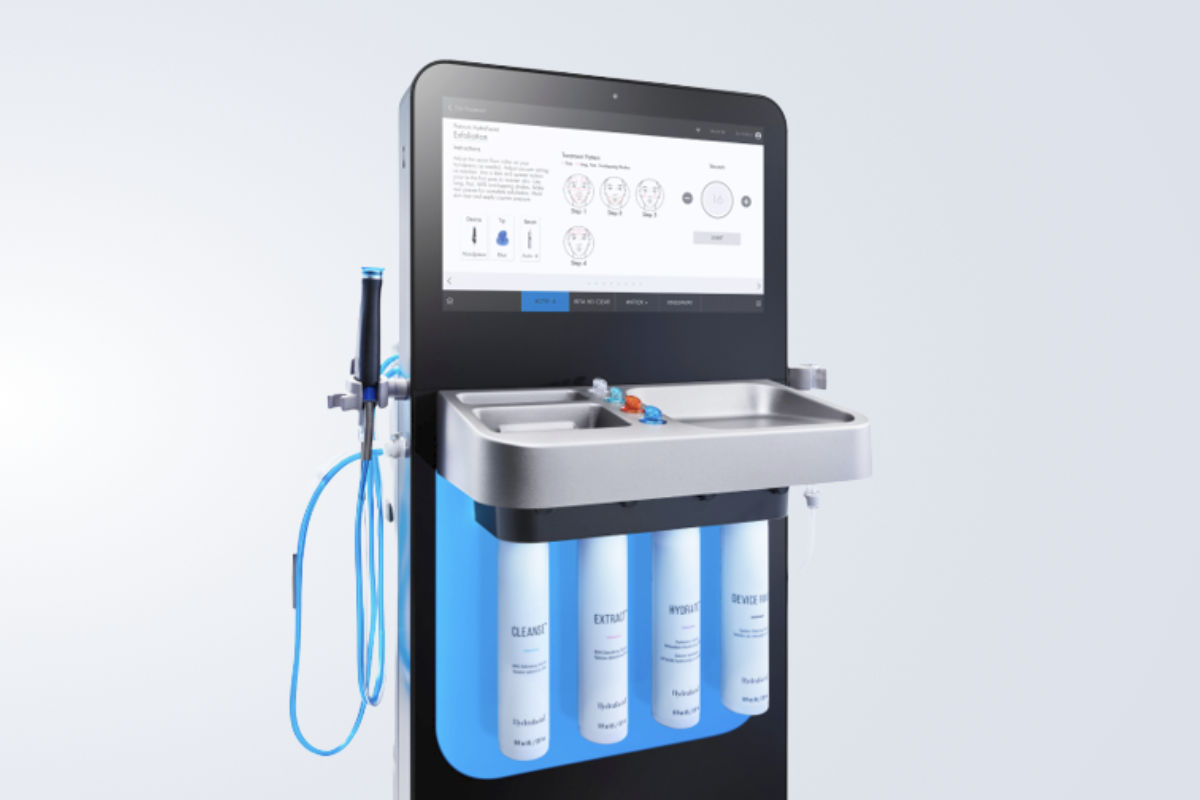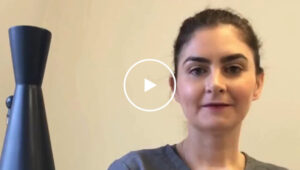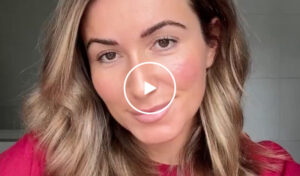Jump to content
- What is a HydraFacial?
- Why are HydraFacials popular?
- How do HydraFacials work?
- Who can perform a HydraFacial?
- Which is the best HydraFacial to have?
- How long does a HydraFacial treatment take?
- How should I prepare for a HydraFacial?
- What do I need to do after a HydraFacial?
- How often should I have a HydraFacial?
- How long do results from a HydraFacial last?
- What do HydraFacials treat?
- Do HydraFacials cause redness or breakouts?
- Do HydraFacials help acne or breakouts?
- Can I have a HydraFacial when pregnant or breastfeeding?
- Who can have a HydraFacial treatment?
- What other areas of the body can a HydraFacial treat?
Over 2 million HydraFacials are performed worldwide each year and their popularity continues to grow. As one of the first UK clinics to offer HydraFacial (more than a decade ago), we’ve been asked to answer common questions about this highly acclaimed medifacial treatment:
What is a HydraFacial?
A HydraFacial is a medical-grade treatment designed to improve skin quality on the face (it can also be used on other areas of the body too). It’s a highly effective, all-in-one treatment which a trained aesthetician delivers using HydraFacial’s unique, high-tech device. Their patented technology and handheld wand enables practitioners to deeply cleanse, exfoliate, extract, detox, hydrate, rejuvenate and provide antioxidant protection to skin in one session. Ideally patients have the treatment regularly to maintain optimum skin quality but a single treatment can improve skin (so it’s a popular choice before a big event). It’s a comfortable, relaxing treatment and is customised to your own specific skin needs, hence why it yields such good results and is considered superior to a standard facial one might have at a spa.
Why are HydraFacials popular?
HydraFacials have built a sizeable following worldwide since their invention in California over 25 years ago. This high-tech, multi-step treatment is considered by many as the most effective non-surgical option to deeply cleanse, brighten, tighten and hydrate skin. It is tailored to your own skin, suitable for all skin types, addresses most skin concerns with no downtime and leaves skin visibly radiant after one treatment. Often referred to as a red carpet treatment due to its immediate results, celebrity fans include Kate Winslet, Charlize Theron, Matthew McConaughey and Beyoncé.
How do HydraFacials work?
HydraFacials are delivered by their special device with its patented ‘Vortex infusion’ technology: a vacuum suction system to extract dead skin cells and impurities, then infusing skin with hydrating serums and finishing with red or blue light therapy.
The treatment begins with a deeply penetrating cleanse and exfoliation, as the resurfacing wand moves across your skin with a cool water and alpha- and beta-hydroxy–acid based solution – this amplifies the effects of the mechanical exfoliation and helps to smooth and clarify skin.
The extraction phase is carried out via gentle suction which is pain-free (and you can see the impurities extracted from your skin into the canister, should you so wish!).
The final stage is typically when a specially selected skin booster or serum (based on your skin concerns, as discussed with your practitioner) is delivered and infused into your skin via the handheld wand. Dependent on the clinic and your skin needs, however, your treatment may end with a final phase of red or blue light therapy – we use a Celluma red light mask, for example.
Who can perform a HydraFacial?
HydraFacials are carried out by aestheticians and other skin practitioners who have been specifically trained in HydraFacial’s patented system. You might like to enquire when your practitioner received their HydraFacial accreditation and therefore how experienced they are.
Which is the best HydraFacial to have?
HydraFacial’s multi-step treatment should be delivered by a qualified practitioner using their patented technology and serums, tailored to your specific requirements (your skin type and desired results). To ensure you receive the best HydraFacial for you personally, check your practitioner’s experience and enquire how the treatment will be customised to you. HydraFacial offer a number of boosters for use during treatment and your practitioner will advise which is best for you. Also confirm if the price includes all treatment phases (ie that it is not an express version) and if any booster your practitioner recommends is included. You may also like to enquire if the clinic includes any additional elements (we include Celluma LED red light therapy, for example).
How long does a HydraFacial treatment take?
A HydraFacial takes around an hour in a clinic such as ours ie for the full multi-phase medifacial treatment. Some practitioners offer an express version which is shorter and therefore less comprehensive. The HydraFacial device can also be used on other parts of the body – your practitioner can advise how long treatment will take for e.g. the hands or back.
How should I prepare for a HydraFacial?
You don’t need to do anything in particular in advance of a HydraFacial but it is best to avoid excess sun exposure or skincare actives (e.g. retinol, AHAs) for 72 hours before treatment. This is to avoid your skin being irritated or oversensitised. If you have them, it is also best to avoid injectable treatments less than two weeks before to allow the injectable product to settle.
What do I need to do after a HydraFacial?
You may put on makeup and return to your normal activities straight after treatment as there is no downtime. You should avoid excess sun exposure and actives in your skincare for up to 72 hours afterwards, using a gentle skincare routine instead plus SPF.
How often should I have a HydraFacial?
To maintain optimal skin health, it’s recommended you have a HydraFacial every 3 to 4 weeks. If your schedule (or budget) doesn’t allow for this, however, it’s worth noting that one treatment can deliver some visible improvement. As always, the condition of your skin will dictate how often a treatment is recommended for you personally to gain best results so your practitioner will advise you. Many patients will have several regular treatments initially, and then reduce the frequency once they are happy with the condition of their skin.
How long do results from a HydraFacial last?
HydraFacial UK say, “Many clients report seeing visible skin refinement and an even, radiant skin tone after just one treatment. The smooth results and hydration may last 5 to 7 days or even longer.” With regular monthly treatments, the goal is to establish and then maintain optional skin quality, from improved skin clarity, hydration and radiance to reduced appearance of fine lines and wrinkles. You can discuss with your practitioner if / when to have treatments less frequently once you’re happy with the quality of your skin.
What do HydraFacials treat?
A HydraFacial treatment can help to address most skin issues, including:
- Overall skin health
- Fine lines and wrinkles
- Dry, dull or dehydrated skin
- Oily & congested skin
- Blackheads & whiteheads
- Blocked or enlarged pores
- Acne & breakouts
- Loss of elasticity
- Redness
- Hyperpigmentation
- Sun damage & age spots
The overall objective of the treatment is to give clearer, smoother, more radiant skin – people often refer to the result at the end of the treatment as the ‘wow’ factor.
Do HydraFacials cause redness or breakouts?
It’s possible to experience a little redness, especially if you have sensitive skin, but this resolves quickly on its own. Some people have a few blemishes after the extraction process but only as with any extraction and if you have particularly congested skin (you can advise your practitioner if you wished to avoid this – if you had an event that day, for example).
Do HydraFacials help acne or breakouts?
HydraFacials can help reduce the severity of existing acne and scarring, as well as minimise the chance of breakouts re-occurring. They can be highly effective in helping break down the active acne cycle in problem skins, killing bacteria and reducing inflammation and the overproduction of oil which can cause skin breakouts. HydraFacials offer a non-invasive method of treating the issues associated with acne, penetrating deep into the skin and helping to address congested pores, blackheads, whiteheads and even scars and cystic acne. Your skin practitioner may also recommend other targeted acne treatments such as IPL, chemical peels, or topical skincare and / or a consultation with an aesthetic doctor or GP if you need further advice.
Can I have a HydraFacial when pregnant or breastfeeding?
You won’t be able to have a HydraFacial when pregnant or breastfeeding. Skin professionals such as our team will happily advise you on how best to maintain good skin health in the meantime – with a suitable at-home skincare regime, if needed – and note when you would like to come into clinic again.
Who can have a HydraFacial treatment?
HydraFacial treatments are designed for all skin types, even the most sensitive. That said, there are a few exceptions – HydraFacials aren’t suitable if you are allergic to shellfish or aspirin. Also, if you have rosacea, a rash or sunburn on your face (or other area to be treated) or are pregnant / breastfeeding, your practitioner may suggest a future date instead or another treatment such as an Intraceutucals oxygen facial.
What other areas of the body can a HydraFacial treat?
Although initially developed for the face and still predominantly used to treat that area, the HydraFacial system can also be used to treat your neck, décolletage, hands, arms, back, legs, hair line / scalp and even bottom. HydraFacial also have a treatment for the scalp and hair, known as HydraFacial Keravive.
If you have any questions regarding HydraFacial treatment, feel free to contact us or your practitioner.






